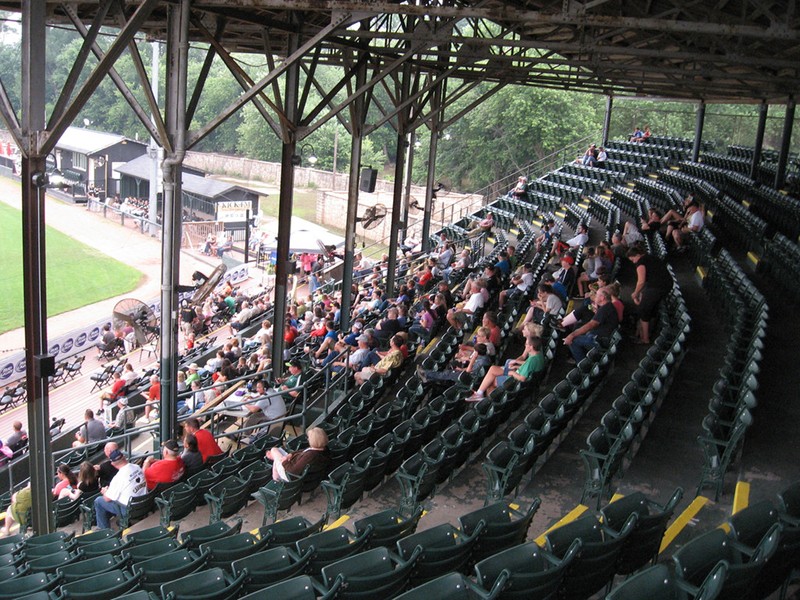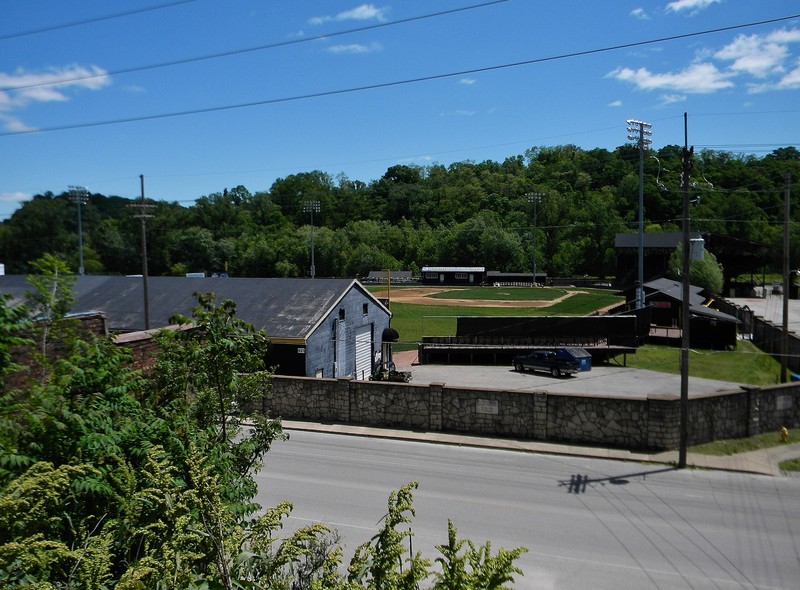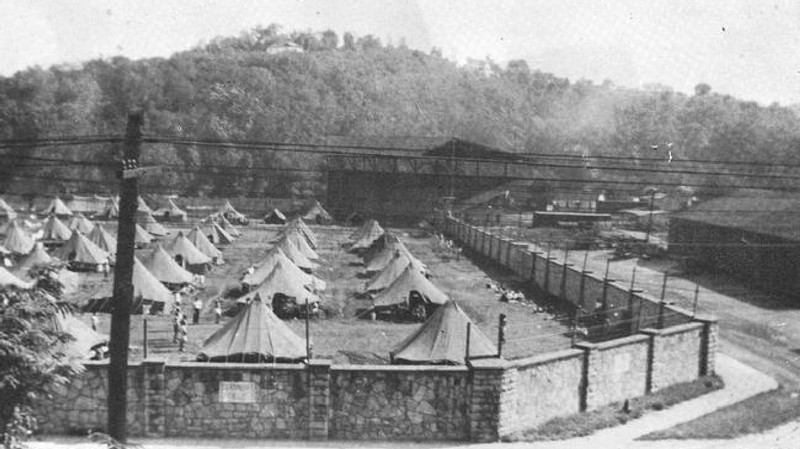Clemens Field
Introduction
Text-to-speech Audio
Hannibal's Clemens Field has been home to numerous minor-league baseball teams and was constructed during the 1930s as part of a New Deal program managed by the Works Progress Administration. The Clemens Field name is a reference to Hannibal's most famous resident: Samuel Clemons (Mark Twain). Demonstrating change over time, the ballpark later served as a German prisoner-of-war camp and then returned to hosting baseball teams after World War II. The park replaced the original structure which was built during the 1920s but destroyed in a fire. That original stadium hosted a night game five years before Major League Baseball played a game under the lights when the Kansas City Monarchs of the Negro League beat the Hannibal team 16 - 1 in 1930 under the innovative traveling light system they brought on trucks. The Monarchs players were far better than those of the local nine, but these professionally usually kept games close when playing on the road as these road games were essential to their financial viability and the players earned extra money while barnstorming. As a result, this box score might provide an indication that the players did not desire to return to Hanibal owing to some aspect of their welcome.
Images
Clemens Field Grandstand

Clemens Field and the limestone wall

Clemens Field in 1944 operating as a POW Camp

Backstory and Context
Text-to-speech Audio
First erected in 1924, the original Clemens Field had the distinction of hosting a night baseball game between Hannibal's team and the acclaimed Kansas City Monarchs of the Negro League on August 15, 1930. (The Monarchs drubbed the Hannibal team 16 - 1 in that game.) The night game occurred five years before Major League Baseball played its first night game. The Monarchs carried their own lighting system from town to town, which helped them play more games and, in turn, earn a living in the process.
A fire destroyed the original Clemens Field facility during the Great Depression on August 14, 1936. As part of a Works Project Administration project, workers built the current Clemens Field from 1936 to 1938, which included constructing a grandstand behind home plate and a limestone wall around the perimeter; workers quarried the local limestone and used it for the wall.
In the fall of 1944, the wall proved extra valuable when the stadium acted as a German prisoner-of-war camp, housing nearly 200 Prisoners of War (POWs), who lived in tents surrounded by barbed wire. The POWs sorted military shoes collected by the army in Europe and sent them to Hannibal, where prisoners repaired the shoes and returned them to Europe; the soldiers distributed them to refugees.
However, the field's primary function for most of its existence involved hosting professional (minor league) baseball teams, which include:
- Hannibal Pilots (1947–48)
- Hannibal Stags (1952)
- Hannibal Cardinals (1953–1954)
- Hannibal Citizens (1955)
Hannibal teams briefly served as an MLB affiliate, first as a "farm team" for the St. Louis Browns (1947) and then the St. Louis Cardinals (1953–1954). Minor League baseball left Hannibal in 1955, leaving Clemens Field to be used for various baseball and community functions. In 2008, Clemens Field received a $3.3 million renovation that preserved the original grandstand and brick wall perimeter, adding 2,500 seats and modern amenities. The collegiate league team Hannibal Cavemen played at the stadium from 2008 to 2016.
Also, in 2016, the town added a new gate to the ballpark entrance called the Jake Beckley .308 Gate. The gate pays homage to the Hall of Fame baseball player from Hannibal (born 1867), who played in the MLB from 1888 to 1907, hitting .308 for his career after collecting 2,934 hits, 1,578 RBIs, and 1,602 runs scored.
The Hannibal Hoots played at Clemens Stadium in 2018 but flooding the next year damaged the field, forcing the Hoots to relocate to Quincy, Illinois. Since then, the stadium has primarily hosted amateur baseball organizations.
Sources
Adler, Jerry. "1934: The Art of the New Deal." Smithsonian Magazine. Arts and Culture sec. June 2009. https://www.smithsonianmag.com/arts-culture/1934-the-art-of-the-new-deal-132242698/.
Amelotti, David. "Hannibal, MO forever linked to World War II with POW Camp on Clemens Field." KHQA. khqa.com. February 28, 2016. https://khqa.com/news/local/hannibal-mo-forever-linked-to-world-war-ii-with-pow-camp-on-clemens-field.
"Clemens Field." Hannibal Parks & Recreation Department. Accessed November 12, 2022. https://www.hannibalparks.org/facilities/clemens-field/.
History.com Editors. "Works Progress Administration." History Channel. history.com. September 22, 2022. https://www.history.com/topics/great-depression/works-progress-administration.
Hurt, Douglas R. The Great Plains during World War II. Lincoln, NE: University of Nebraska Press, 2008.
"Jake Beckley." Baseball Reference. baseball-reference.com. Accessed November 14, 2022. https://www.baseball-reference.com/players/b/becklja01.shtml.
Gardner, Tony. "Registration Form: Clemens Field." National Register of Historic Places. mostateparks.com. 2008. https://mostateparks.com/sites/mostateparks/files/Clemens%20Field.pdf.
"Hannibal Hoots to play remaining 2019 home games at QU Stadium." KHQA. khqa.com. June 21, 2019. https://khqa.com/news/local/hannibal-hoots-to-play-remaining-2019-home-games-at-qu-stadium.
Reichard, Kevin. "Hoots to O'Fallon; Clemens Field Future in Play." Ballpark Digest. September 29, 2019. https://ballparkdigest.com/2019/09/29/hoots-to-ofallon-clemens-field-future-in-play/.
https://ballparkdigest.com/2019/09/29/hoots-to-ofallon-clemens-field-future-in-play/
By Jon Roanhaus - Own work, CC BY-SA 3.0, https://commons.wikimedia.org/w/index.php?curid=49050823
KHQA: https://khqa.com/news/local/hannibal-mo-forever-linked-to-world-war-ii-with-pow-camp-on-clemens-field
